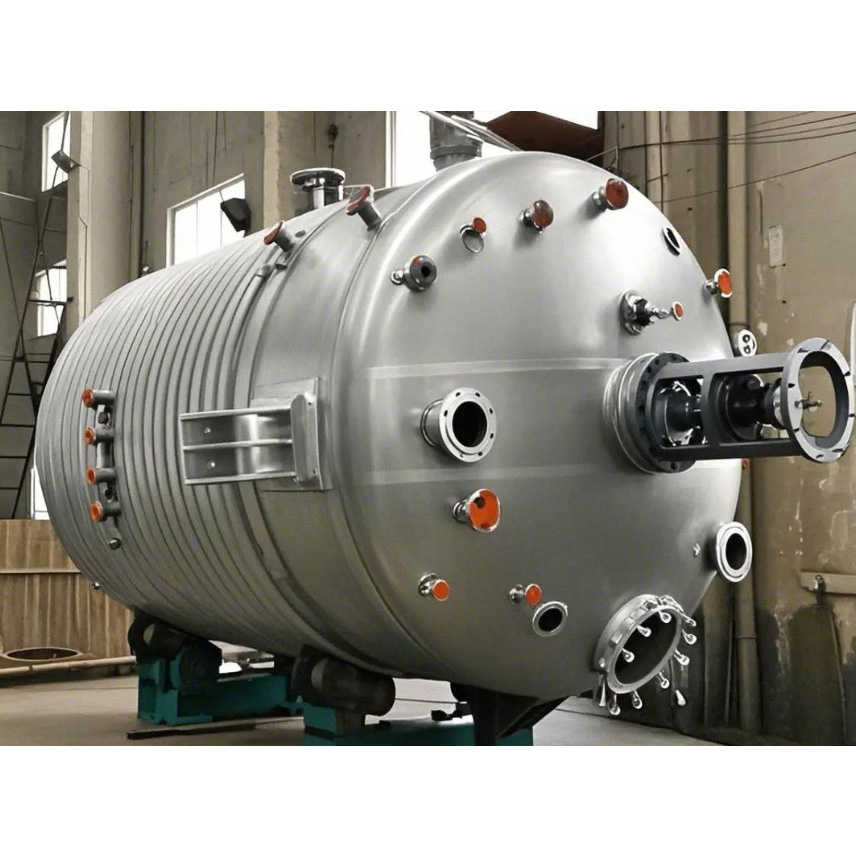Comprehensive Analysis of the Working Principle and Core Applications of Reactors
Release time:2025-10-08
Visits:54
I. Definition and Core Structure of Reactors
A reactor is a core device for achieving material mixing, chemical reactions, and physical changes. Its core structure consists of a kettle body, a transmission system, a stirring device, a temperature control module, and a sealing device. Some special models are also equipped with a photocatalytic system or a high - pressure control unit. The kettle body is usually made of stainless steel, carbon steel, or composite materials to meet the characteristics of corrosion resistance, high - temperature resistance, and high - pressure resistance. Among them, the stirring system improves the reaction uniformity through designs such as anchor type, paddle type, and turbine type, while the jacket, coil, or electric heating device realizes precise temperature control.
II. Main Types and Technical Characteristics
1. Tank Reactors
Suitable for high - temperature and high - pressure environments, they can achieve real - time adjustment of reactant concentration, pressure, and temperature through an automated control system. They are commonly used in the preparation of polymer materials such as synthetic resins and rubbers.
2. High - Pressure Reactors
Equipped with multi - layer stirring paddles and reinforced sealing structures, they can complete complex processes such as vulcanization and hydrogenation. Zirconium and nickel - based alloys are often selected as materials to deal with extreme reaction conditions.
3. Small - Scale Photocatalytic Reactors
Integrating a light source system and a detection module, they use light energy to activate catalysts and are suitable for laboratory - level precision synthesis of nanomaterials, pharmaceutical intermediates, etc.
III. Working Principle and Process Advantages
The reactor mixes materials by driving the stirring shaft with a motor and controls the reaction rate and product quality in combination with the heat transfer system. For example, a photocatalytic reactor activates the catalyst through the ultraviolet or visible light band to accelerate the redox reaction. The process advantages include:
- The fully enclosed design ensures a sterile environment, and the mirror - polished inner wall eliminates sanitary dead corners.
- Multi - level safety devices (such as explosion - proof membranes and pressure relief valves) ensure operational safety.
- It is compatible with various temperature control methods such as steam, electric heating, and heat - conducting oil, and is suitable for acidic, alkaline, and high - temperature media.
IV. Application Fields and Industry Cases
Reactors are widely used in the following fields:
- Chemical and Materials Industry: Preparation of synthetic rubbers, coatings, dyes, and nanomaterials.
- Pharmaceutical and Bioengineering: Extraction of pharmaceutical intermediates, vaccine fermentation, and concentration of active ingredients.
- Food Processing: Fermentation of seasonings, homogenization of dairy products, and production of food additives.
- New Energy Development: Synthesis of lithium - battery electrode materials and research and development of hydrogen - energy catalysts.
V. Future Development Trends
With the upgrading of new material technologies,
reactors are developing towards intelligence and energy conservation. For example, the integration of sensors and Internet of Things technologies enables remote monitoring, and the application of new alloys and composite materials further expands the corrosion - resistance and high - temperature - bearing capacity of the equipment. In the future, reactors will play a more crucial role in fields such as green chemistry and biomedicine.

